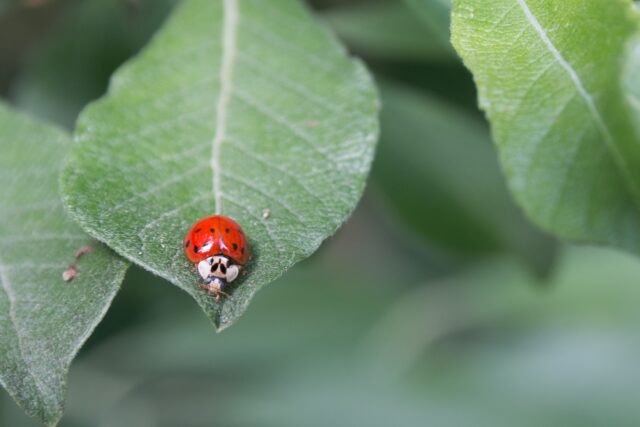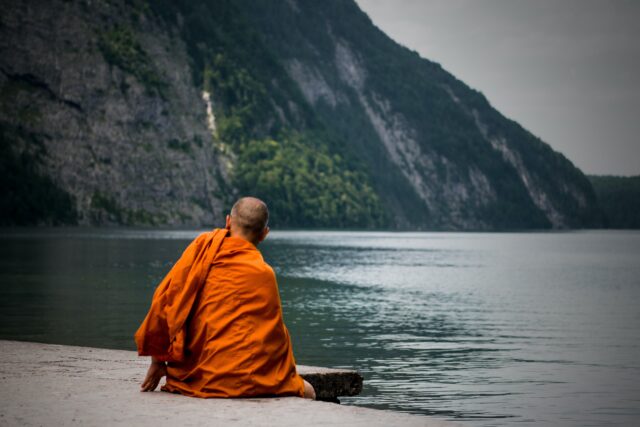Dear readers,
Before I built the simple open-air hut in rural Hawaii where I cook, write, and practice music, the only structure on my land was a large, open-sided tent perched on a wooden platform. The platform was the first thing I built when I bought the land several years ago—a tiny island lifting me a precious few feet above a sea of knee-deep mud.
To live in the tent was to live in direct contact with nature. I shared the space with enormous brown hunting spiders, bright green geckos, a determined crew of mosquitos, and the occasional coqui frog whose shrill chirping could keep me up all night. Every now and then, a stray cat would decide that I was in need of a roommate, and I’d come home to find a furry intruder glaring at me from my own bed.
When it rained, I’d feel a gentle spray of mist on my face. When it stormed, I’d lie awake, worrying that an overhanging tree branch would snap off and crush me in my sleep. One night, a branch did fall, its jagged, mossy end poking right through the roof of the tent. I pushed it out, repaired the hole with duct tape, and went back to bed. Other times, I’d wake up to the voices of hunters on the trail that runs through my land, and see their flashlights in the dark. Ever so briefly, I’d wish I had a door. As it was, I didn’t even have a wall.
One night during hurricane season, there was a windstorm. As I listened to the metal tent poles creaking and groaning, the tree branches sighing, and the plastic tarp snapping back and forth with every violent gust, I felt real fear. This isn’t how people live, I thought. This isn’t a real life. I felt like a bug in a rolled-up leaf—dry, but just barely. Safe, but just barely. As I contemplated this image, my fear lifted, and I realized I was being given a great gift. How many people in our urbanized world ever get to experience what it’s like to be an insect, a bird, or some other creature who lives with only the barest protection against the elements? How many people get to live this close to the wind, the rain, and the land itself?
The precarity with which I lived was frightening sometimes, but awesome too—in the sense of putting me in direct contact with experiences of awe. Wrapped up in the windstorm, vulnerable to it, afraid of it and awed by it, I had no choice but to experience life in its rawest form.
Even after I built my hut, I continued to sleep in the tent. The one-room hut was too small to fit my bed or store my clothes, and for better or worse, I’d stopped worrying about falling branches. When I visited friends who lived in proper houses, the still indoor air felt spooky to me, and the spacious rooms devoid of life. Where were the vines twining around the legs of the furniture? Where were the spiders and geckos? Where was the mist? Now that I’d gotten used to spending twenty-four hours a day in the open air, living indoors now struck me as incredibly lonely. After reveling briefly in my friends’ comfortable couches and clean kitchens, I soon felt restless to get back to my exposed, precarious, and inconvenient home.
This summer, the island where I live was hit by a tropical storm. I stayed at a friend’s house in town while the river flooded, and when I got home, I found that the tent which had sheltered me for almost five years had finally begun to fail. As I mopped up the water, I realized that if I didn’t make a change, the wooden platform on which the tent stood would soon begin to rot, and then I would have a real problem on my hands. Maybe it was time to dismantle the tent and build a proper roof and some half-walls—not a sealed house, nothing to give one the feeling that one was indoors, but something a little sturdier, a little safer, and a lot dryer.
For a couple of months, I hemmed and hawed. I worried that building a roof would chip away at the precarity which had become precious to me. Would my newfound comfort come at the price of awe? Would it numb the empathy I felt towards those who had no choice but to live with minimal shelter, and whose precarity was far more real and pressing than the semi-optional version I valued and enjoyed? Once I had a wood-framed structure, it would only make sense to put up mosquito screens; once I started enclosing the place against insects, it would only make sense to put up a door to keep out cats and people, too. Before I knew it, I would be locking the door—and my state of vivid, uncomfortable, electrifying relationship with the land would be forever changed.
*
Spiritual traditions from around the world emphasize poverty, precarity, and voluntary simplicity as gateways to the divine. The monks in some Zen monasteries bathe in cold water, chop their own firewood, and limit themselves to simple clothing and bedding that provide the bare minimum of comfort. Shamanic peoples engage in practices like fasting, vision quests, and sweat lodges, through which they voluntarily enter a state of mild to extreme discomfort. The Benedictine monastic order of Catholics requires its members to take a vow of poverty, in response to Jesus’ advice, “If you want to be perfect, go, sell your possessions and give to the poor, and you will have treasure in heaven.”
There seems to be a consensus among world religions that too much material comfort is a barrier not only to mystical union, but also to everyday virtues like compassion, empathy, and community. When we’re just a little bit cold, hungry, lost, or broke, we’re more likely to remember the suffering of others, and act altruistically towards them. Physical discomfort can act as a whetstone to compassion, keeping us in a state of harmony instead of isolating ourselves in an echo chamber of plenty.
I often think of my land as a monastery, and its many discomforts as invaluable tools for honing equanimity, patience, humility, and love. Was I being called to patch the leaking tent and tighten the lashings, eking out its life for one more season? Or was it time to accept the “death” of this particular companion and move on?
After a second storm earlier this fall left big puddles on my bedroom floor, I made the decision to build the roof after all—and build it before hurricane season picked up in earnest. For a frenzied couple of weeks, I made trip after trip to the lumberyard, stocking up on two-by-fours and primer, and ordering metal roofing. Finally, it was time to take down the threadbare roof tarp and pull apart the hollow metal poles which held it up. For years, that tarp had been all that separated me from the wind and rain. Now, I climbed up on a stepladder and began to peel it off. After just a few tugs, the sky was revealed, and the monkeypod branches overhead. A few more tugs, and I found myself standing on a wooden platform surrounded by trees and plants, a rack of green bananas hanging just out of reach of my bed. It was delightful to stand there—to see how small my life was, compared to the life all around. Compared to the trees and cliffs, my bed looked like a toy, the wooden platform no bigger than a child’s playhouse. And I knew, suddenly, that I could let the tent go, without losing what was most precious to me. In my heart and mind, I would continue to live as a bug in a leaf, even as my body stayed dry.
As fall moves into winter, I invite you to embrace discomfort wherever you encounter it—whether that’s in a forest monastery, on a city bus, or wandering around your own neighborhood. You might just find a new sense of compassion waiting on the other side.
Readers, this November, may you all find the kind of shelter you need—and may awe find you there in all its forms.
Sincerely,
Hilary Smith
Senior Editor, Hierophant Publishing

